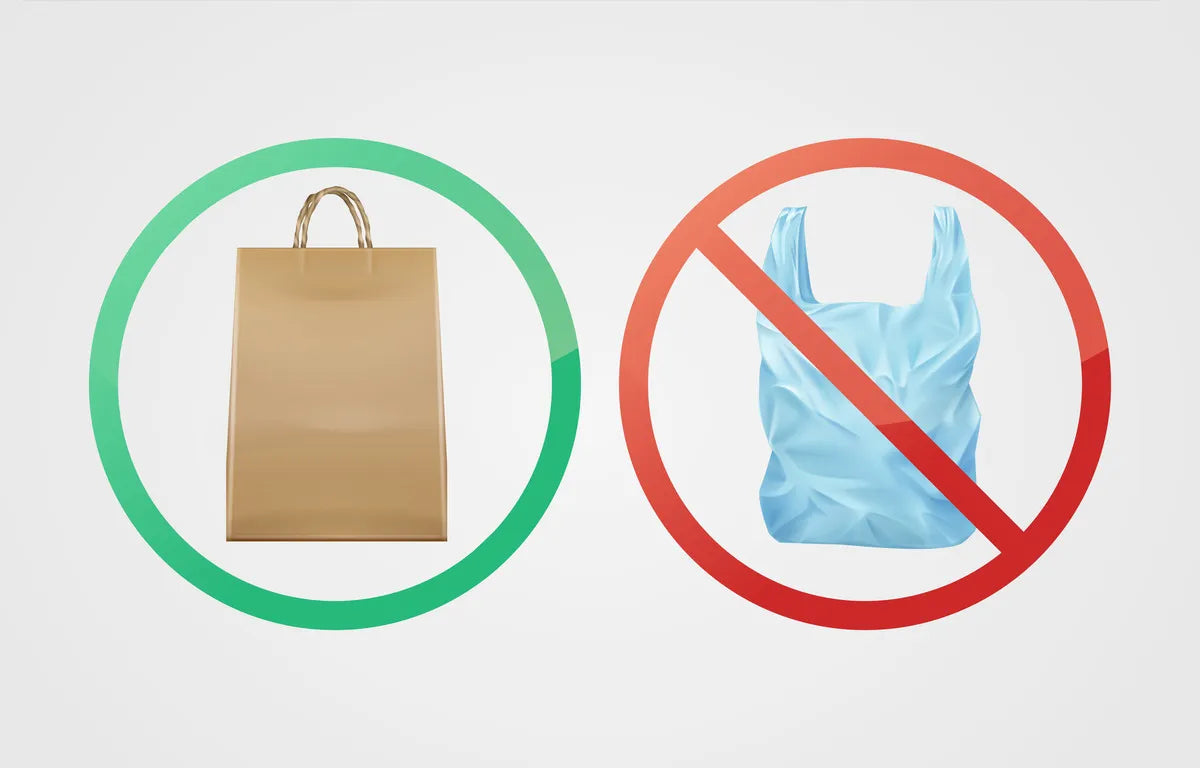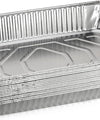Recent Post
Archive
- August 2024
- June 2024
- April 2024

Plastic vs. Paper Food Packaging: A Detailed Comparison
Simon Chua
Aug 14, 2024
When it comes to food packaging, one would often make a comparison between paper and plastic materials. Both have their own sets of advantages and drawbacks, rendering the choice between the two dependent on various factors, including sustainability, cost, and functionality.
Let’s dive into a detailed comparison between plastic and paper food packaging, shedding light on why paper might be the superior choice for both the environment and your brand.
Sustainability and Environmental Impact
The environmental impact of food packaging materials is of crucial consideration in today's eco-conscious market. Paper food packaging stands out amongst other materials due to its biodegradability and recyclability.
Unlike plastic, which can take hundreds of years to decompose and often ends up polluting oceans and landfills, paper packaging breaks down much more quickly and can be recycled into new products.
By choosing paper food packaging, companies can significantly reduce their carbon footprint. For instance, the production of paper bowls and paper cups in Singapore involves less energy and generates fewer greenhouse emissions compared to plastic manufacturing.
This not only helps in conserving natural resources, but also in promoting a greener image for the brand and benefiting the environment.
Cost and Availability
When it comes to cost, plastic packaging appears cheaper, at least initially, in most cases. However, the long-term environmental costs and the increasing regulatory pressures on plastic usage can make it less economical over time.
Paper food packaging, while sometimes slightly more expensive upfront, offers savings through its lower environmental impact and growing consumer preference for sustainable options. However, in some cases, such as packaging material for hot or wet food, a higher quality of paper might be required.
In markets like Singapore, the availability of high-quality paper food packaging has increased significantly. Companies such as Laser Packaging provide a wide range of paper food packaging products, from paper bowls to paper cups in Singapore, ensuring businesses have access to top-tier materials that meet their needs without compromising on quality.
Functionality and Versatility
Functionality is another important factor to be considered in food packaging. Plastic has long been ubiquitous for its durability and resistance to moisture. It can also be molded into various shapes and sizes, making it especially useful for the fast food industry.
However, advancements in paper food packaging technology have made paper a compatible option. Modern paper bowls and cups are designed to be sturdy and leak-resistant, making them suitable for a variety of food items.
Moreover, paper packaging offers greater versatility in terms of branding and design. Paper can be easily printed with high-quality graphics and logos, enhancing brand visibility and appeal. This makes paper food packaging not only a practical choice, but also a powerful marketing tool.
Consumer Preference and Market Trends
The global food packaging trend is shifting towards more sustainable packaging options. A growing number of consumers are aware of the environmental impact of their choices and are opting for products that align with their values.
Paper food packaging meets this demand, providing an eco-friendly alternative that resonates with today's environmentally conscious consumers, who would rather have their food and drinks served in paper bowls and paper cups. In Singapore, there has been a notable increase in the use of paper food packaging, as businesses respond to consumer demand for sustainability. By adopting paper food packaging, your company can build a stronger position among today’s eco-conscious consumers.
Regulatory Considerations
Regulatory authorities are increasingly promoting the use of sustainable packaging solutions while sanctioning pollution. Many governments around the world are implementing stricter regulations on plastic use to combat pollution and promote environmental sustainability.
This shift is encouraging businesses to explore alternative packaging options, with paper food packaging emerging as a preferred choice. Companies that adopt paper packaging are positioning themselves to benefit from this shift, as this decision ensures long-term viability and compliance.
Cheaper, Greener, and Better Paper Food Packaging from Laser Packaging
Switching to paper food packaging might seem risky, especially for operations at a larger scale, as it may appear that this increases the chances of tears, leaks, or food spoilage. However, these concerns can be minimised with the help of an established service provider that can ensure the use of high-quality paper that is specifically designed for food packaging.
Laser Packaging is your ideal food packaging partner in Singapore, with considerable experience in catering to the needs of small restaurants and large manufacturing operations alike. Whether it’s our customised paper food packaging or aluminium food trays, all our products are designed to ensure their contents remain in prime condition all the way to the consumer. Contact us for reliable packaging solutions today.
← Older Post Newer Post →



